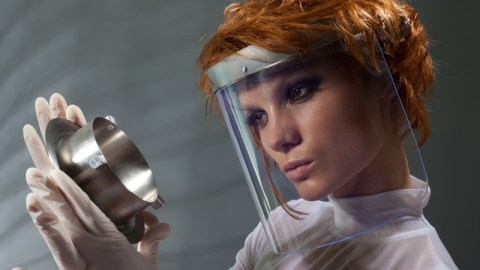The First Industrial Evolution

If the first industrial revolution was all about mass manufacturing and machine power replacing manual labor, the First Industrial Evolution will be about the ability to evolve your personal designs online and then print them using popular 3D printing technology. Once these 3D printing technologies enter the mainstream, they could lead to a fundamental change in the way that individuals – even those without any design or engineering skills – are able to create beautiful, state-of-the-art objects on demand in their own homes. It is, quite simply, the democratization of personal manufacturing on a massive scale.
At the Cornell Creative Machines Lab, it’s possible to glimpse what’s next for the future of personal manufacturing. Researchers led by Hod Lipson created the website Endless Forms (a clever allusion to Charles Darwin’s famous last line in The Origin of Species) to “evolve” everyday objects and then bring them to life using 3D printing technologies. Even without any technical or design expertise, it’s possible to create and print forms ranging from lamps to mushrooms to butterflies. You literally “evolve” printable, 3D objects through a process that echoes the principles of evolutionary biology. In fact, to create this technology, the Cornell team studied how living items like oak trees and elephants evolve over time.
3D printing capabilities, once limited to the laboratory, are now hitting the mainstream. Consider the fact that MakerBot Industries just landed $10 million from VC investors. In the future, each of us may have a personal 3D printer in the home, ready to print out personal designs on demand.
At the same time, there’s been a radical re-thinking about how products are designed and brought to market. Take On the Origin of Tepees, a book by British scientist Jonnie Hughes, which presents a highly provocative thesis: What if design evolves the same way that humans do? What if cultural ideas evolve the way humans do? One example cited by Hughes is the simple cowboy hat from the American Wild West. What if an object like the cowboy hat “evolved” itself, using cowboys and ranch hands simply as a unique “selective environment” so that it could evolve over time?
Wait a second, what’s going on here? Objects using humans to evolve themselves? 3D Printers? Someone’s been drinking the Kool-Aid, right?
But if you’ve read Richard Dawkins’ bestseller The Selfish Gene, you can see where Hughes is headed with his ideas. Dawkins coined the term “meme” back in 1976 to express the concept of thoughts and ideas having a life of their own, free to mutate and adapt, while cleverly using their human “hosts” as a reproductive vehicle to pass on these memes to others. Memes functioned like genes, in that their only goal was to reproduce for the next generation. In such a way, evolved designs are a form of “teme” — a term first popularized by Susan Blackmore, author of The Meme Machine, to denote ideas that are replicated via technology.
What if that gorgeous iPad 2 you’re holding in your hand was actually “evolved” and not “designed”? What if it is the object that controls the design, and not the designer that controls the object? Hod Lipson, an expert on self-aware robots and a pioneer of the 3D printing movement, has claimed that we are on the brink of the second industrial revolution. However, if objects really do “evolve,” is it more accurate to say that we are on the brink of The First Industrial Evolution?
The final frontier, of course, is not the ability of humans to print out beautifully-evolved objects on demand using 3D printers in their homes. (Although that’s quite cool). The final frontier is the ability for self-aware objects independently “evolving” humans and then printing them out as they need them. Sound far-fetched? Well, it’s now possible to print 3D human organs and 3D human skin. When machine intelligence progresses to a certain point, what’s to stop independent, self-aware machines from printing human organs? The implications – for both atheists and true believers – are perhaps too overwhelming even to consider.




